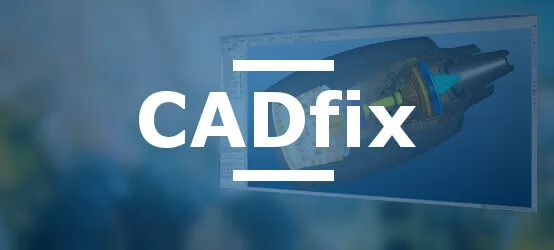CAD Interoperability Solutions for Seamless Manufacturing Workflows | 3D Model Optimization
In 2024, a leading aerospace manufacturer faced a critical challenge: after receiving CAD files from several subcontractors using different design software, their engineers discovered that a complex part contained invisible geometric anomalies. These defects were only identified during manufacturing, resulting in a three-week production delay and significant additional costs. This situation, far from being isolated, perfectly illustrates the interoperability challenges that daily affect industrial manufacturing workflows.
In today's manufacturing environment, the seamless transition from a digital model to a physical product represents a major strategic issue. Statistics reveal that approximately 30% of digital models contain anomalies that can hinder manufacturing processes, while the diversity of CAD formats (CATIA, SolidWorks, STEP, IGES) significantly complicates data exchanges between different links in the production chain.
The consequences of these breaks in the digital chain are significant:
- Extended development cycles with multiple iterations
- Increased costs related to manual corrections and rework
- Loss of critical information during conversions between systems
- Manufacturing errors leading to scrap and delivery delays
To address these challenges, our specialized solutions guarantee data integrity throughout the manufacturing process, regardless of the complexity of your digital ecosystem. We support more than 30 native and neutral CAD formats, ensuring complete interoperability between the heterogeneous systems that make up your technical infrastructure.
Our CADfix platform serves as a central hub for optimizing digital models, offering essential features for manufacturing preparation:
- Precise diagnosis and automatic repair of defective models
- Geometric optimization for additive manufacturing processes
- Seamless conversion between heterogeneous CAD environments
- Intelligent slicing of models for 3D printing
In parallel, our CADIQ solution ensures rigorous qualification of digital models before manufacturing:
- Comprehensive analysis detecting over 150 types of potential defects
- Validation of conversions between formats to ensure geometric fidelity
- Identification of unintentional modifications between versions
- Systematic verification according to established industry standards
The business benefits observed by our clients are tangible and significant:
- Up to 90% reduction in time spent correcting problematic models
- 50% decrease in total model preparation time for manufacturing
- Elimination of tedious hours of manual file rework
- Consistent improvement in the final quality of manufactured products
Our expertise allows you to establish a truly seamless manufacturing flow, where digital data circulates freely from design to production without compromising quality or integrity. Discover in the detailed articles in this section how our solutions can transform your digital manufacturing chain into a sustainable and measurable competitive advantage.
"Monday morning, 9:15 a.m. The aircraft factory is buzzing. The livid production manager has just announced the complete shutdown of the assembly line. Two major components of a €6 million fuselage don't fit together—a gap of only 3.8 mm, invisible on the digital drawings. The result: €1.2 million in losses and a three-month delay. The cause? A simple geometric error in the initial CAD model, never detected before manufacturing."
This situation is not an isolated one. Nearly 30% of the digital models used in production contain geometric anomalies that silently sabotage manufacturing. These "phantom defects"—free edges, degenerate faces, excessively thin walls—are ticking time bombs in your production line.
And the most troubling part? Most of these defects are easily detectable with the right CAD qualification tools.
Can your business really afford to manufacture mistakes?
Additive manufacturing (or 3D printing) is revolutionizing industrial production methods by enabling the creation of complex parts impossible to produce with traditional processes. However, between the initial design of a CAD model and its final manufacturing, a crucial but often neglected process is required: the preparation and optimization of the digital model. This step determines the quality, precision, and ultimate success of the manufacturing process.
For engineers and designers, the transition between a CAD model and a file usable by additive manufacturing machines represents a major technical challenge. Geometric errors, model watertightness issues, and format incompatibilities can compromise the entire production process.
To harness the full potential of 3D printing, a deep understanding of CAD preparation is essential. This stage is crucial for ensuring that design intent is flawlessly translated into the final 3D printed product. Central to this preparation is slicing technology, and CADfix has emerged as an invaluable asset, utilizing the power of curved facets for unmatched accuracy.


